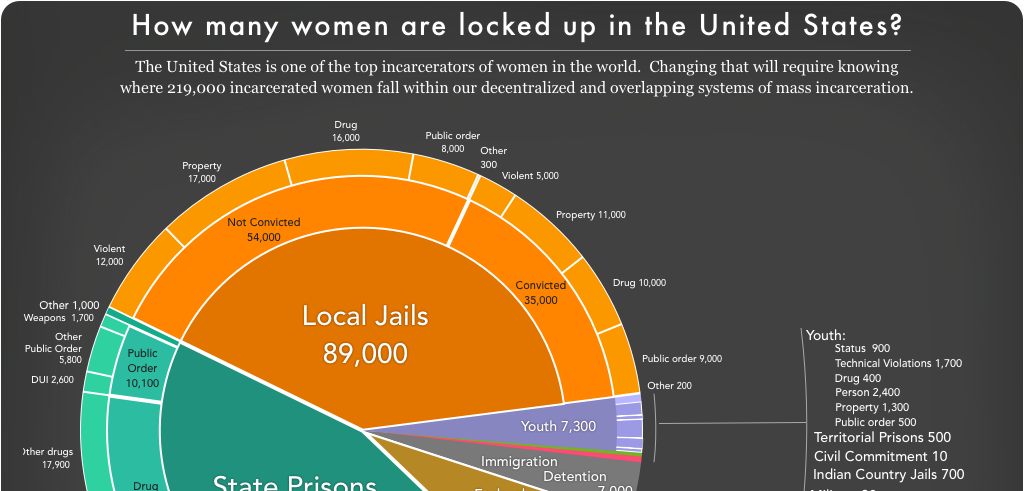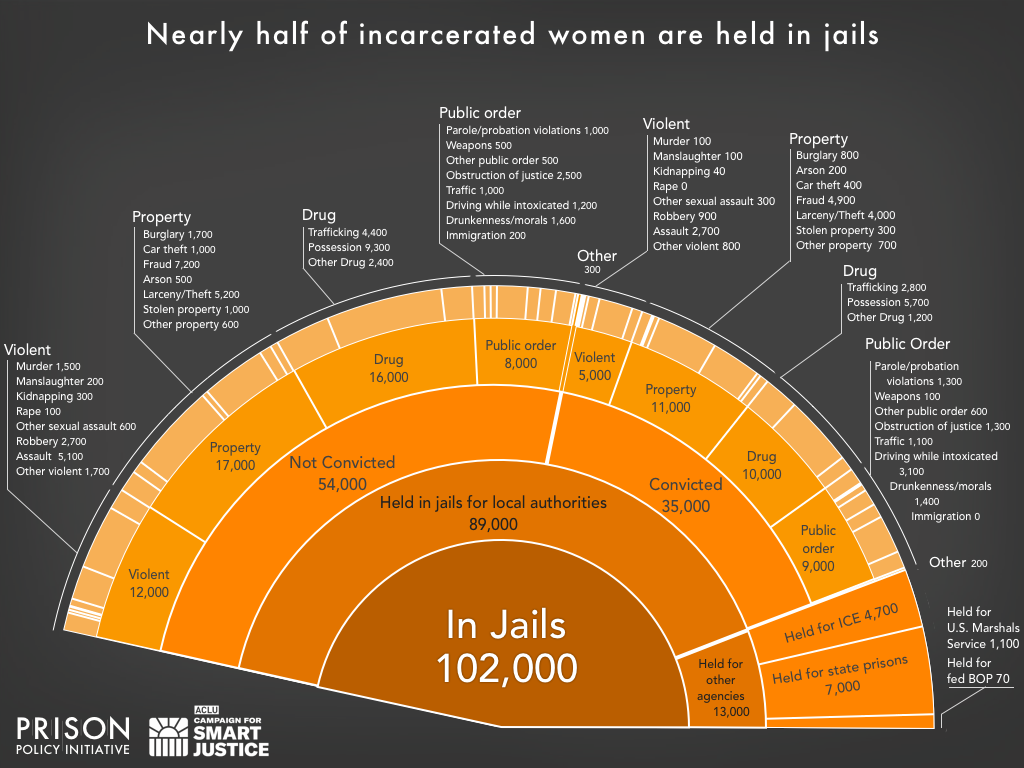New report, Women’s Mass Incarceration: The Whole Pie 2018, reveals how many women are locked up in the U.S., where, and why
The report includes a new, data-rich visualization of women in jails, highlighting a critical area for criminal justice reform.
November 13, 2018
Women in the U.S. experience a starkly different criminal justice system than men do, but data on their experiences is difficult to find and put into context. In a new report produced in collaboration with the ACLU’s Campaign for Smart Justice, the Prison Policy Initiative fills this gap in the data with a rich visual snapshot of how many women are locked up in the U.S., where, and why.
In Women’s Mass Incarceration: The Whole Pie 2018 (a detailed update to the inaugural 2017 version), Legal Director Aleks Kajstura pieces together data from the country’s fragmented systems of confinement, producing a detailed “big picture” visualization as well as a separate close-up view of women in local jails.
Kajstura’s analysis reveals that:
- 56% of women in prisons or jails are there for drug or property offenses, compared with approximately 40% of the general incarcerated population (which is almost entirely male).
- 7,000 immigrant women are in confinement every day awaiting deportation or an immigration hearing.
- 54,000 women are behind bars every day without a conviction, typically because they cannot afford money bail.
- While 219,000 women are behind bars every day, over 1 million are on probation, suggesting that probation reform is also a women’s issue.
“With this big-picture view, it’s easier to see why many state-level reforms unintentionally leave women behind,” Kajstura said. Her analysis particularly underscores the need for local reforms to county jails:
- Incarcerated women are far more likely than men to be held in local jails, both before trial and while serving their sentences.
- Of all immigrant women held for ICE, 4,700 are not in detention centers, but “rented” beds in local jails.
- 80% of women in jail are mothers, and most are the primary caretakers of their children.
- Mental health care is notoriously bad in jails, where suicide rates are literally off the charts.
While states vary widely in how many women they put behind bars, every single U.S. state outranks most independent countries on women’s incarceration, as we found in June 2018 – making reform a moral necessity in every state. Kajstura calls her analysis “the foundation for reforming the policies that lead to incarcerating women in the first place.”
See the full data visualization and report: https://www.prisonpolicy.org/reports/pie2018women.html





